According to owners, breeders, trainers, and shelter staffs, anxious confrontations between dogs are not at all unusual. Dogs will be dogs after all, falling back on those lost years when they were wild and not domesticated.
The following are only a few methods and tips to turn your dog from an aggressive beast into a social devotee. It is possible with patience and instruction.
Applying Positive Methods
For a set period of time (weeks or months, as needed), whenever another dog appears, like clockwork you offer your own dog sweet baby talk or cheery “jolly talk” and a special favorite food never given at any other time. The “bar opening” is contingent only on the presence of other dogs; therefore the bar opens no matter how good or badly your own dog behaves. Likewise, the “bar” closes the moment the other dogs leave – you stop the happy talk and stop feeding the treats.
Skeptics may ask whether giving treats to a dog whose behavior is still far from angelic does not actually reward bad behavior. But behaviorists explain that the classical conditioning effect – creating a strong positive association with other dogs – is so powerful that it overrides any possible reinforcement of undesirable behavior that may initially occur. The unwanted behavior soon fades in intensity.
Another advantage of the Open Bar technique is that it can be incorporated into training regimens that are easy to set up, such as “street passes.” Street passes are also a means of using distance and repetition to desensitize your dog to other dogs. The final goal is for your dog to be able to walk by a new dog and do well on the first pass.
All you need to set up a training session using street passes is the help of a buddy and his dog. Position yourself about 50 yards from a place where you can hold your dog on leash, or tie him securely to a lamp post or tree. Ideally, this should be on a street, about 50 yards from a corner, so your friend can pass through an area of your dog’s vision and then disappear.
Your friend and his dog should wait out of sight until you are in position and ready with your treats. At that point he should appear with his dog, strolling across an area within your dog’s sight. As soon as he and his dog appear, open the bar and start sweet-talking your dog as you give him treats. The moment that your buddy and his dog disappear from sight, the bar closes and you stop the treats and attention.
Don’t get discouraged if on the first few passes your dog seems too frenzied to care about you and your treats. Patience will pay off. “It may take 10, 15, or 25 passes, but how many times in a row can he get totally hacked off?” asks Dunbar. “At some point he will calm down.” When he does, he will begin to make the connection with the food appearing and disappearing with the comings and goings of the “cookie dog.”
Similar sessions can be set up in quiet parks or out-of-the-way places. The handler, with the aggressive dog on leash, should stand several feet off a path, as a friend walks by with his dog, also on leash. Both dogs should have an appetite (don’t work on this right after the dog has been fed!) and both handlers should have really yummy treats in hand to help keep their dogs’ attention on them and to reward the dogs for good behavior.
The dog walker should make several passes, until the stationary dog is able to maintain a sit without lunging. As training progresses, the owner should be able to gradually reduce the distance necessary for his dog to react calmly with what Donaldson calls a “Oh, you again” response when the familiar dog passes by. The same process is repeated as new dogs are introduced into the equation.
Changing the Handler’s Behavior
Across the continent in Toronto, Canada, Cheryl Smith, who developed some of the concepts used at MHS, also believes that working with owners and dogs as a team is one of the most important components of her Growl Classes. One of the first things that Smith teaches owners is how to take a deep breath and relax about everything. Owners who remain calm are better able to pay attention to their dog’s body language and to observe what triggers aggression.Without special coaching, owners are likely to do exactly the opposite, thus making the problems worse.
For example, if you anticipate or respond to your dog’s aggressive behavior by tightening up on his leash, you will reinforce his perception that he should be leery of other dogs. If you get upset when he lunges and barks, your emotions will fuel his tension and aggression. If you continue to punish and reprimand your dog after he has started to settle down, you will only confuse him and make him more stressed, because punishment that comes more than a couple of seconds after a behavior is too late – your dog will think he is being punished for being quiet!
In contrast, the right approach utilizes prevention and early intervention. The dog must be prevented from repeating the problem behavior because every time that he does so successfully it will become more entrenched! Interventions may include moving to break up eye contact, using a body block to prevent physical contact or to redirect forward movement, giving a cue such as “Gentle” (open the mouth and relax the jaw) or “Off” (back away), and offering treats to defuse or interrupt tension interactions. Smith says that corrections should be limited to verbal reprimands, time-outs, or the withholding of a reward; further, she doesn’t recommend that any of these corrections enter the picture until the dog is able to respond correctly at least 80 percent of the time.
Be Patient – and Realistic
Of course, there will be some dogs that don’t respond adequately to any training program. These may require a referral to a certified veterinary behaviorist who can prescribe drugs such as Prozac as part of the treatment arsenal. If you have an aggressive dog, you have a responsibility to ensure his safety and that of others by taking appropriate measures, including the use of a muzzle when indicated.But no matter how serious your dog’s problem may be, Jean Donaldson advises keeping it in perspective:
“In any discussion of aggression, it bears remembering that the bar we hold up for dogs is one we would consider ridiculous for any other animal, including ourselves. We want no species-normal aggressive behavior directed at any other human or canine at any time, of even the most ritualized sort, over the entire life of the animal? It’s like me saying to you, ‘Hey, get yourself a therapist who will fix you so that for the rest of your life, you never once lose your temper, say something you later regret to a loved one, swear at another driver in traffic, or yell at anyone, including your dog.’ It’s a tall order!”In other words, keep your expectations realistic.
Oscar Wilde once said: “A work of art is the unique result of a unique temperament.” He could have been talking about the creative arts but I'd like to think he was talking about man's best friend too.
For more information about socializing your temperamental dog please go to The Whole Dog Journal where you will find even more tips on training your dog to associate with others of his or her kind.
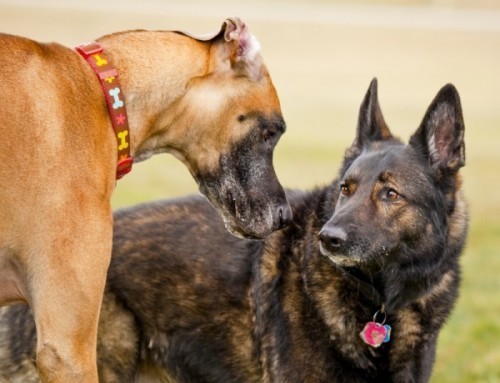
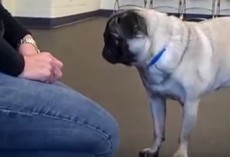
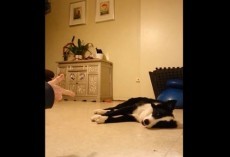





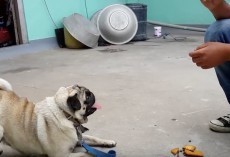

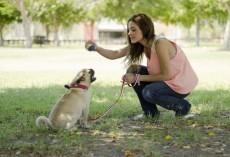
Jerry Calvey
- Edit
As a trainer, working with behavior modification in K9’s. Its really more of the owner than it is the dog! Most of the time, the owner is stressed the moment the leash is hooked on. Negativity sets in, what’s gonna happen today, joggers coming from this side, kids at the bus stop. Dont get me wrong, its good to plan, but you need to slowly introduce them to Reactive situations, if avoidance is the #1 plan, behavior will never change. Then the owner complains about having a stubborn dog, when they cannot avoid a situation. They have a death grip on the leash & then a tight leash to add. The dog is happy, Yeah! We’re going for a walk, not let’s see who I can bark, growl & lunge at today. I ask my clients to do a daily diary, how far away did the dog, start focusing? What was his behavior, ears foward, staring, licking his lips, yawning, did he show any avoidance behavior, (looking away, sniffing, looking at you etc. What were u doing & what was your reaction. Many will not do it, it’s too much work! & that also goes for obedience training. Thanx for your time! Jerry